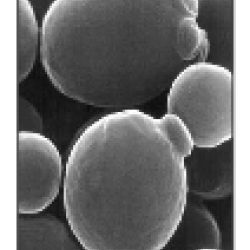Source Institutions
Source Institutions
Add to list Go to activity
Activity link broken? See if it's at the internet archive

In this activity about the relationship between food and energy (page 1 of PDF), learners observe and quantify the growth of yeast when it is given table sugar as a food source. Learners will make predictions, conduct the experiment, record observations, create a bar graph to chart the results, and draw conclusions about the role of sugar as an energy source. If thermometers or probes are available, learners can also measure temperature to explore heat as a by-product of energy conversion. This guide includes background information, setup and management tips, information about using cooperative groups, extensions, and a handout.
- 10 to 30 minutes
- 45 to 60 minutes
- $1 - $5 per group of students
- Ages 8 - 14
- Activity, Experiment/Lab Activity, Lesson/Lesson Plan
- English
Quick Guide
Materials List (per group of students)
- 100 mL of water at room temperature
- 2 250-mL beakers or plastic cups
- 2 craft sticks or plastic spoons
- 2 pkgs of rapid rising yeast
- 2 tsp of sugar (or 2 single serve sugar packets)
- Plastic ruler, metric (mm marked)
- Sheet of graph paper
- Tape, paper and marker (for labeling)
- Copy of student sheet (p. 4 of PDF)
- 12-in. laboratory thermometer or temperature probe (optional)
- Dropper or plastic pipette (optional)
Subjects
-
Life Sciences
-
Cells
- Cell Metabolism
-
Diversity of Life
- Protists and Fungi
-
Ecology
- Energy Flow and Chemical Cycles
-
Cells
-
Physical Sciences
- Heat and Thermodynamics
- Energy
-
Chemistry
- Chemical Reactions
-
Mathematics
-
Data Analysis and Probability
- Data Analysis
- Data Collection
- Data Representation
- Measurement
- Number and Operations
-
Data Analysis and Probability
-
The Nature of Science
-
The Scientific Process
- Conducting Investigations
- Gathering Data
- Formulating Explanations
- Communicating Results
-
The Scientific Process
Informal Categories
- Food and Cooking
Audience
To use this activity, learners need to:
- see
- read
- touch
Learning styles supported:
- Involves teamwork and communication skills
- Uses STEM to solve real-world problems
- Involves hands-on or lab activities
Other
Includes alignment to state and/or national standards:
This resource is part of:
Access Rights:
- Free access
By:
- Moreno, Nancy P. ; Clayton, Sonia Rahmati ; Cutler, Paula H. ; Young, Martha S. ; Tharp, Barbara Z.
Rights:
- All rights reserved, Baylor College of Medicine, 2009
Funding Source:
- NASA, NCC9-58
